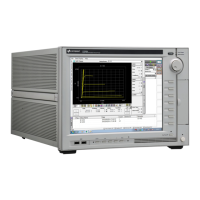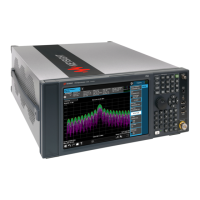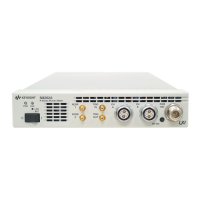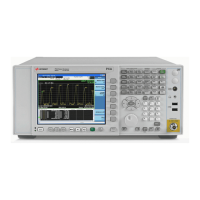Programming Examples 5
Keysight Models 6811C, 6812C, and 6813C Programming Guide 259
Programming the Status Registers
You can use status register programming to determine the operating condition of
the ac source at any time. For example, you may program the ac source to
generate an interrupt (assert SRQ) when an event such as a current limit occurs.
When the interrupt occurs, your program can then act on the event in the
appropriate fashion.
Figure 5-5 shows the status register structure of the ac source. Table 5-1 defines
the status bits. The Standard Event, Status Byte, and Service Request Enable
registers and the Output Queue perform standard GPIB functions as defined in the
IEEE 488.2 Standard Digital Interface for Programmable Instrumentation. The
Operation Status, Questionable Status, and Questionable Instrument Isummary
Status registers implement functions that are specific to the ac source.
Power-on conditions
Refer to the *RST command description in Chapter 3, "Language Dictionary" for
the power-on conditions of the status registers.
Operation status group
The Operation Status registers record signals that occur during normal operation.
The group consists of the following registers:
Register Command Description
Condition STAT:OPER:COND? A register that holds real-time status of the circuits being
monitored. It is a read-only register.
PTR filter STAT:OPER:PTR <n> A positive transition filter that functions as described under
STAT:OPER:NTR|PTR commands in Chapter 3, "Language
Dictionary". It is a read/write register.
NTR filter STAT:OPER:NTR <n> A negative transition filter that functions as described under
STAT:OPER:NTR|PTR commands in Chapter 3, "Language
Dictionary". It is a read/write register.
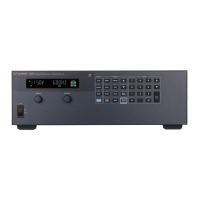
